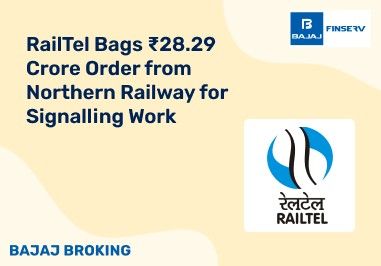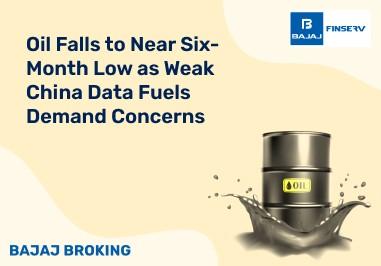BAJAJ BROKING
PDP Shipping & Projects IPO is Open!
Open a Free Demat Account
Trade Now, Pay Later with up to 4x
Track Market Movers Instantly
What is the Risk-Free Rate of Return?
At each step of your investment journey, you need to weigh risks and returns against one another and make smart decisions about buying, holding or selling your assets. You can use various metrics and concepts to understand how the risks and returns from an investment stack up against one another. One such parameter is the risk-free rate of return.
Many investors have misconceptions about the true meaning of the risk-free rate of return. In this article, we’ll delve into the details of the risk free rate, how it’s calculated and why it is significant.
What is the Risk-Free Rate of Return?
The risk-free rate of return is the hypothetical rate of return from an investment that carries zero risk. In other words, if you take on no risk in an investment, you earn returns at the risk-free rate only.
You can also think of this as the minimum rate of return that you can expect from an asset that is completely risk-free. To take on any additional risk by investing in the asset, you will naturally expect higher returns — over and above the risk free rate.
Also Read: What is Foreign Portfolio Investment?
Risk-Free Investments: Do They Exist?
When you start to research the concept of the risk-free rate of return, you may wonder if there is any investment that actually carries zero risk. While this may be possible in theory, it is not true in practice because every investment carries some level of risk. Nevertheless, for the purpose of computing the real and nominal risk-free rates of return, securities issued by the government are generally considered as close to being risk free as possible.
In most parts of the world, U.S. Treasury Bills or T-bills are used as the benchmark for analysing the risk-free rate. This is because of the following reasons:
- The market almost universally believes there is no chance of the U.S. government defaulting on its debts
- The U.S. government debt market is the most liquid market segment in the world
If you want a more domestic benchmark to compute the risk-free rate of return in India, you can use the rates offered by the Indian government on its bonds and T-bills. These securities have maturity periods ranging from 91 days to several years. Depending on the timeframe for which you are calculating the risk-free rate of return in India, you can choose the debt security.
For example, the rate of return from Indian T-bills may be a suitable benchmark for short-term analysis. However, if you want to compute the risk-free rate of return over the long term, the 10-year bond rate offered by the Indian government may be suitable. As of 2023, this rate is a little over 7% per annum.
Nominal vs. Real Risk-Free Rate of Return
The nominal risk-free rate of return is the rate at which a (theoretically) risk-free government security offers returns to the investor. However, in practice, this nominal rate is affected by inflation. The real risk-free rate of return accounts for this. It is calculated using the formula shown below.
| Real Risk-Free Rate of Return = Nominal Risk-Free Rate of Return — Inflation Rate |
The Significance of the Risk-Free Rate of Return
The risk-free rate of return is a fundamental concept in modern finance and asset pricing models. Various theories and models like the Modern Portfolio Theory (MPT) and the Black-Scholes pricing model use the risk-free rate of return for different calculations. More specifically, it is a crucial element in the Capital Asset Pricing Model (CAPM) and in computing the Sharpe ratio.
- Risk-Free Rate of Return in CAPM
The Capital Asset Pricing Model uses the risk-free rate of return to compute the expected returns from an asset. The formula used for this purpose is shown below.
| ERa = Rf + βa (ERm — Rf) |
Where,
ERa is the expected rate of return from the asset
Rf is the risk-free rate of return
βa is the beta of the asset
ERm is the expected rate of return from the market
(ERm — Rf) is the market risk premium
Let’s look at an example to understand this better. Say the risk-free rate of return is 5%, the expected rate of return from the market is 11% and the beta of an asset is 2. In that case, the rate of return you can expect from the asset (ERa) can be computed as shown below.
ERa = Rf + βa (ERm — Rf)
= 5% + 2 (11% — 5%)
= 5% + 12%
= 17% per annum
- Risk-Free Rate of Return in Sharpe Ratio
Analysts also use the risk-free rate to compute the Sharpe ratio, which compares the returns from an investment with the risk it poses for the investor. The higher the Sharpe ratio is, the better because it means you are getting higher returns for taking on additional risk.
Also Read: What Is Risk Management In Stock Market?
What Does the Risk-Free Rate of Return Tell You?
You know the meaning of the risk-free rate of return and how it is used in various asset pricing models and ratios. But what does this metric really tell you? The answer is three-fold. The risk-free rate of return reflects the following aspects:
- Rental Rate
This is the actual rate of return on your investments when you lend your funds over a given period. It is considered lending because debt instruments consider investors’ capital as a loan.
- Inflation
The nominal risk-free rate of return accounts for the inflation rate over the period of investment. This helps you compute the real returns you will earn after the effect of inflation on your money.
- Investment or Maturity Risk
Changes in interest rates and other economic factors can increase or decrease the principal value of your investment. The maturity risk is the risk of your investment corpus decreasing in value before the maturity date.
Conclusion
Whether you are investing over the short term or the long term, the risk-free rate of return is an important aspect to consider as a benchmark for your investment decisions. It helps you understand whether you are earning the bare minimum rates of return on your assets. If the actual rate of return is higher than the risk-free rate of return, it indicates that the added risk you’ve taken has paid off positively.
Share this article:
Read More Blogs
Our Secure Trading Platforms
Level up your stock market experience: Download the Bajaj Broking App for effortless investing and trading













